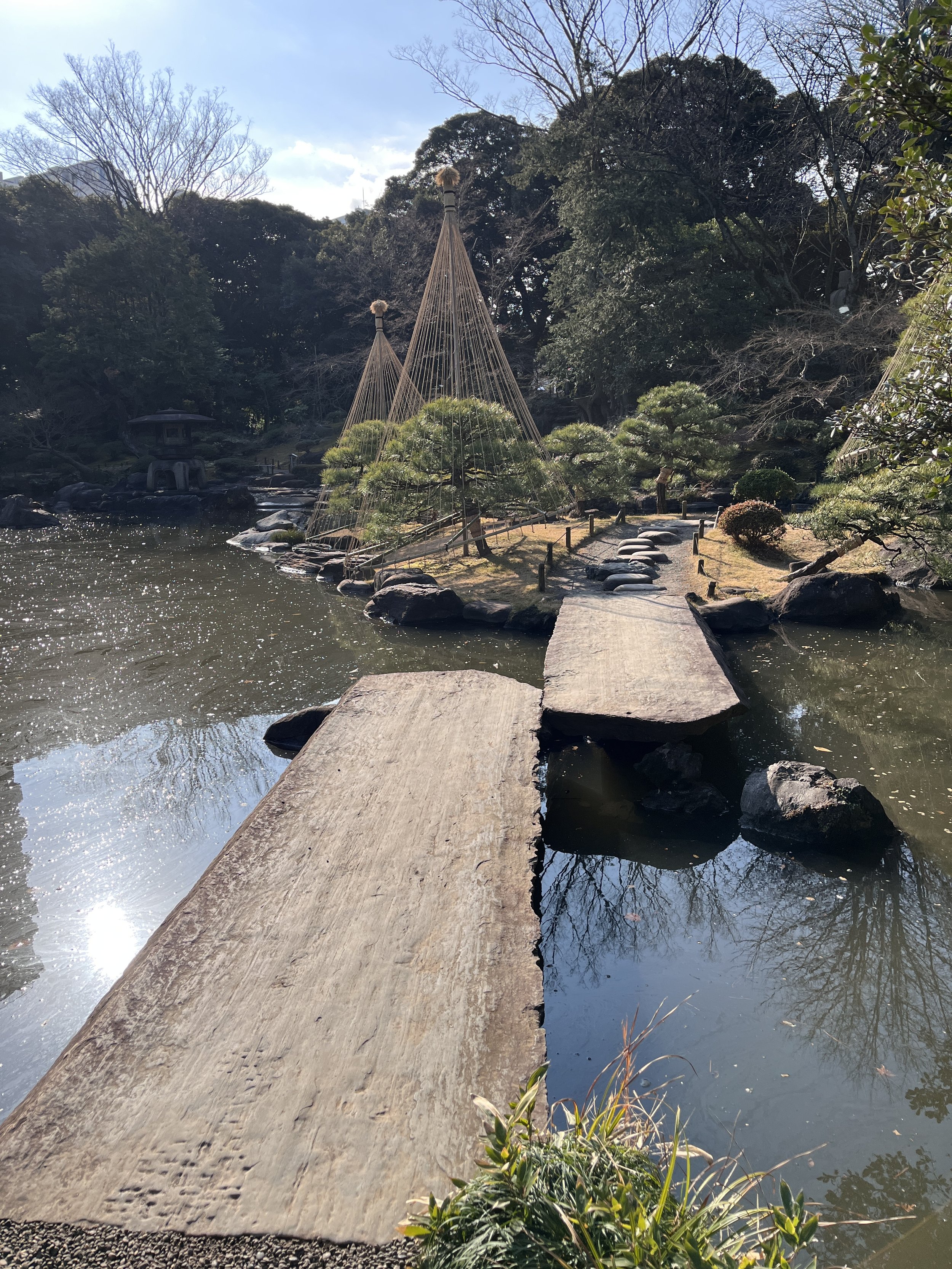the aesthetic of a Japanese garden
During my recent trip to Japan, I had a pleasure of visiting numerous gardens in Tokyo and Kyoto.
Many of the gardens that I visited belonged to a temple, some were public parks, and some were in the courtyards of hotels.
Planting on streets of Tokyo
I also found it very inspiring just walking the side streets of Tokyo or Kyoto and seeing container plantings that had been created around the entrances to peoples’ houses or simply decorating the streets.
One of the first impressions is that Japanese garden design is predominantly flushed with green colour. There are many evergreen shrubs and trees that dominate most of its planting designs. These are often Rhododendrons, Azaleas, Ilex shrubs or Pine trees.
The contrasts between the different shapes of foliage and the shades of greenery are particularly pleasing and very prominent in Japanese garden design.
Often Leopard plant (Farfugium japonicum) and its round, pancake-like leaves, is juxtaposed with the linear blades of mono grass (Ophiopogon japonicus). A small, daisy-like flower from the Leopard plant, standing high above its foliage, brings a welcome hint of yellow.
Garden at Nezu Museum, Tokyo
It is worth noting that Japanese garden design is devoid of colour. Here Azaleas and cherry trees are welcome additions that enliven Japanese gardens and attract many seasonal visitors and tourists to admire their floral displays.
The calm, monochrome planting palette of a Japanese garden is often intertwined with the changing foliage of deciduous trees, with their fiery displays during the autumn months.
In contrast to many Western gardens, where the main aim is to deliver a parade of colours from numerous blooms, especially in case of English cottage garden style, the strength of Japanese garden design lies in its opposite aesthetic.
At first many Japanese gardens look loose and unkept, but this is only illusion. On closer examination one notices that not much is left here for serendipity. At glance a branch of a shrub might appear rough and uncontrolled, only to discover later that it is part of a well-manicured stage design.
Even though some elements of a Japanese garden design might look very formal and prescribed, this is not really the case. By combining the architecture of the buildings, tea houses, the materials used, the position of rocks and stones, within a backdrop of greenery mainly from shrubs and trees, a Japanese garden emanates a very relaxing and atmospheric ambience.
Moreover, many elements of a Japanese garden design are created with purpose and have meanings assigned to them, like for example the use and position of stones and creation of paths.
A stone path
Nevertheless, the prescribed function of many of the building blocks of a Japanese garden can be very subtle and therefore don’t influence negatively on the perception of such a garden as a whole entity. This contrasts with what might be a case in many formal Baroque gardens, where one can be made to feel at unease.
In a Japanese planting design, there is a lot of space left around each individual plant, often on a background of moss growing on unplanted patches of soil. This differs from many Western plantings, where it is important to cover the soil tightly with plants, here the space that is left makes the individual plant stand out more, becoming a small feature, a focal point in a garden.
One of the main insights I gained from exploring many Japanese garden designs was how limited the plant palette was. In this planting design we can clearly see that that working with just a few varieties of shrubs or perennial plants can still build a well-balanced, interesting and sensual garden.
Ardisia japonica plant
There is so much to take and learn from a Japanese garden and planting design. Some of the key features that are used in Japanese garden can be gently incorporated into a Western style garden, without making it look slightly skewed or out of place copy of the Japanese aesthetic.
I am looking forward to my next trip to Japan to see, how the palette of plants that are used and the aesthetic of Japanese gardens will evolve.




